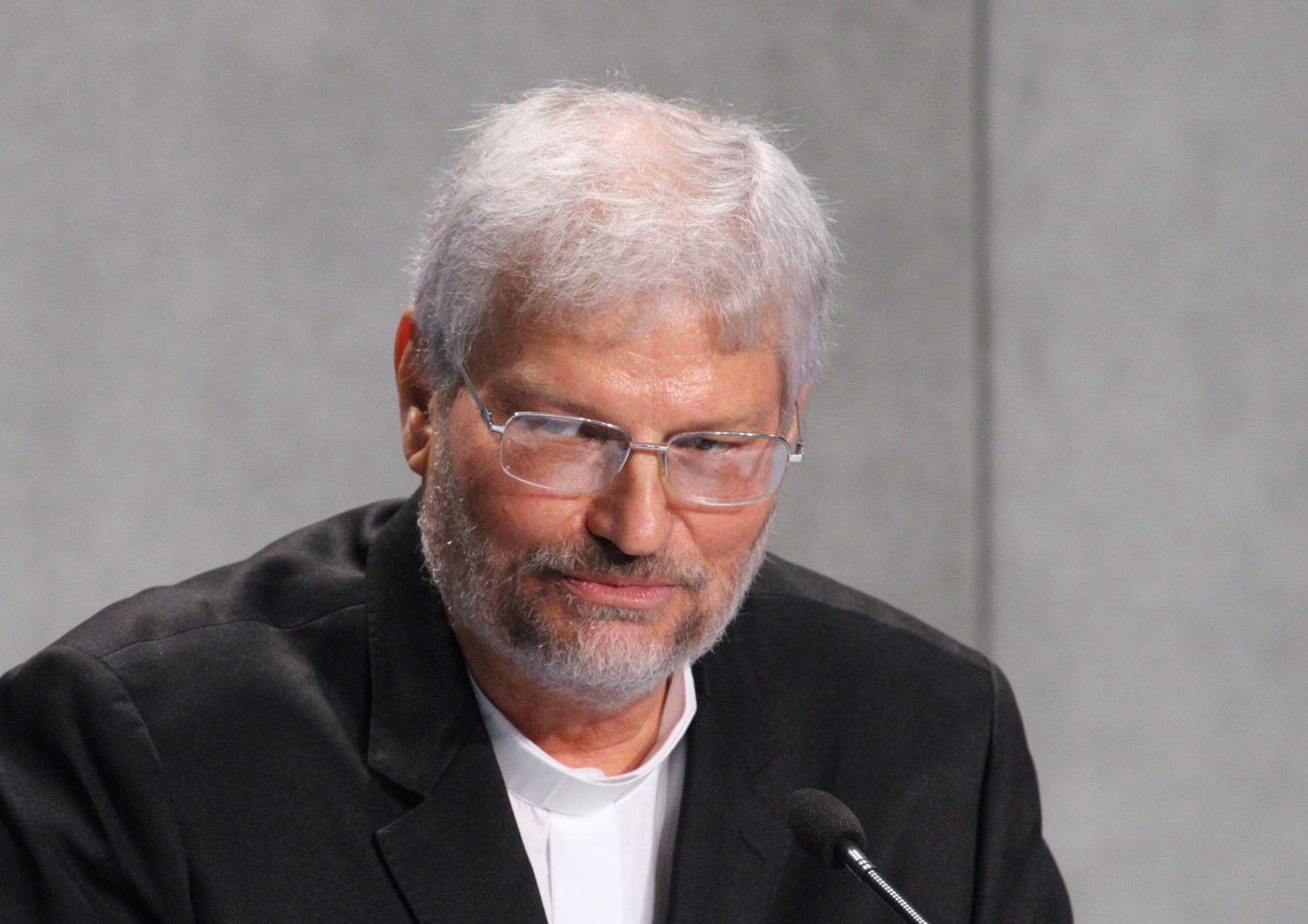Archbishop Gaenswein: Claim Benedict XVI Opened Path for Women Deacons ‘Totally Absurd’
The Pope Emeritus’ personal secretary firmly rejects Brazilian synod father’s claim that a 2009 papal decree paved the way for women deacons.

Benedict XVI’s personal secretary has said a claim put forward yesterday by a Brazilian synod father that Benedict revised canon law in 2009 to allow the ordination of women deacons is “totally absurd and wrong.”
Archbishop Georg Gänswein, prefect of the Pontifical Household, said he had not spoken to the Pope Emeritus about the matter and his comments to the Register “come only from me.”
His remarks come after Bishop Evaristo Pascoal Spengler of Marajó, Brazil, told reporters yesterday that the synod had opened a path to the ordination of women deacons.
“In 2009 the Pope [Benedict] made a change in canon law, according to which the bishop, the priest and the deacon receive their mission and the faculty to act in the name of Christ,” Bishop Spengler claimed.

Claiming that because Benedict had de-linked the diaconate from Christ, Bishop Spengler said “we realize that there is a path that is open for the ordination of women.”
Benedict's Motu Proprio
The bishop was referring to Benedict’s 2009 motu proprio Omnium in Mentem, which revised Canons 1008 and 1009 of the Code of Canon Law, CNA's Ed Condon reported.
The revision’s purpose was to incorporate more fully the teaching of the Second Vatican Council on the nature of the diaconate which Pope John Paul II had already updated in the Catechism.
Benedict’s revision emphasized the distinction between diaconal and priestly ministry, that deacons do not act in the person of Christ through the celebration of Mass. But significantly, he left intact canonical wording which reflects the unity of the sacrament of orders for all three grades of deacon, priest and bishop.
Bishop Juan Ignacio Arrieta Ochoa, secretary of the Pontifical Council for Legislative Texts, told CNA that Benedict made revisions to canon law to “better distinguish the ministry of priests and deacons” but that “nothing is said or mentioned regarding women.”
Bishop Arrieta also mentioned Pope Francis’s commission on the female diaconate which has reached no definitive conclusion since it began in 2016. The Pope has said the matter will continue to be studied.
In his comments yesterday, Bishop Spengler also referred to women deacons in the early Church, but in May the Pope said the deaconesses from that time cannot be understood as an equivalent to the modern sacramental notion of the diaconate.
A 2002 Vatican study concluded that these deaconesses did not have the same functions as male deacons and had “no liturgical function,” nor a sacramental one. It also said that even in the fourth century “the way of life of deaconesses was very similar to that of nuns.”
Synod Push for Female Diaconate
Archbishop Gänswein’s comments come as a number of synod fathers have pushed for the ordination of women deacons in the Amazon, ostensibly to help bring the sacraments to remote areas.
But such a change is also viewed by some synod fathers, such as Bishop Erwin Kräutler, emeritus of Xingu, Brazil, as a possible step to the ordination of women priests. Bishop Kräutler, a key figure behind the synod, has long advocated women priests as well as married clergy.
Observers point out that the pathway to Anglican ordination of women as ‘priests’ began by first instituting a female ‘diaconate.’
Pope St. John Paul II’s 1994 apostolic letter Ordinatio sacerdotalis firmly ruled out the ordination of women. Pope Francis has also given a definitive “no” to the possibility.














